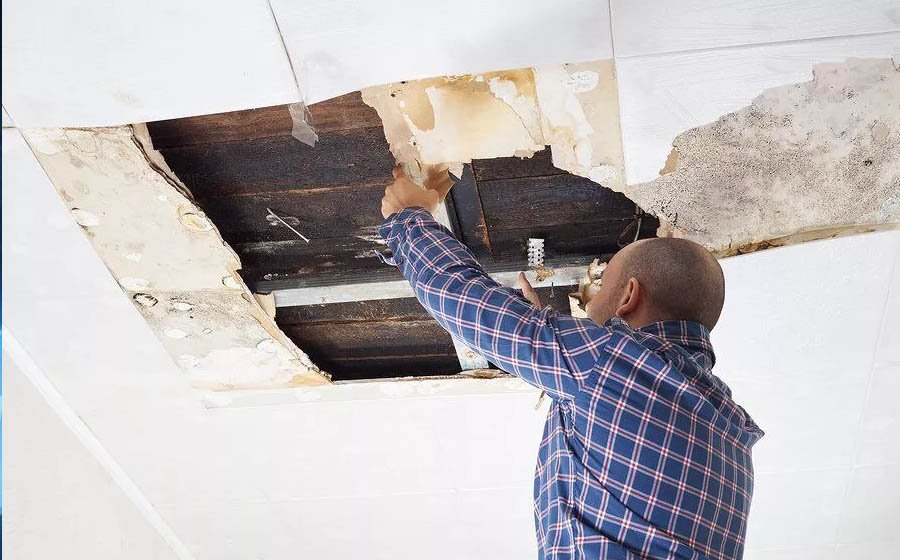Our home is one of the most prized investments, so it’s important to protect it from damage. Unfortunately, one of the biggest threats to our homes is termite infestations, which can cause serious structural damage if not taken care of quickly.
Termites are small, wood-eating insects that live in colonies. They will travel through the ceilings and walls of your home, looking for food in the form of wood and cellulose material such as drywall. Since ceilings are made mostly of wood, ceilings are one of the most common places where termites can quickly cause damage.
Unfortunately, termite damage can be hard to spot in ceilings, as the damage takes place on the inside. However, here are some common signs of termite damage in ceilings that you can look for to finally come up for help of a professional termite removal company.
Common signs of termite damage
-Sagging or bulging ceiling panels–Termites will eat away at wooden beams and joists which hold the ceiling up in your home. So if you notice any sagging or ging in your ceiling, it’s a sign that termites may have been eating away at the wood.
-Noise- Do termites make noise? Yes, you may be able to hear a faint scratching or tapping noise coming from inside your walls or ceiling. This is the sound of termites eating away at the wood.
-Cracks along the edges of the ceiling–If you notice any cracking near seams or edges, this can indicate that termites have been chewing into it. As they eat through the wood beams, they cause the ceiling to become weaker and more prone to cracking.
-Mud tubes–Termites travel through mud tubes which shelter them from the elements as they move around looking for food. If you see any thick, brown tubes coming up from your ceiling or walls, this signifies that termites are present in your home. Usually, mud tubes hang on the ceiling when they infest the wood above.
-Discoloration–If you notice any discoloration on your ceiling, this could be a sign that termites have been eating away at it for some time. You may see the light brown or yellow spots where the termites have been feasting on the wood.
-Frass- Frass is the wood debris that termites create as they chew through the wood in your home. If you notice small piles of sawdust or powdery, wood-like material near the ceiling, this could signify termite infestation.
If you notice any of these signs of termite damage in your ceiling it’s important to take action immediately. First, contact a professional pest control company to come and inspect the area and treat your home for any potential infestations. Taking steps to protect your ceiling from termite damage could save you thousands of dollars.
How to prevent termite damage in ceilings?
The best way to prevent termite damage in ceilings is by taking proactive steps to keep your home and its surroundings safe from infestations. Here are some tips for preventing termites from damaging your ceiling:
-Regularly inspect for signs of termites – By regularly inspecting for any signs of termite activity, you can catch any potential infestations before they become a major problem. Look for mud tubes, frass, or discoloration in your ceilings and walls to spot any signs of termite activity.
-Remove sources of moisture – Termites thrive in moist environments, so it’s important to keep the area around your home dry. For example, fix leaky pipes or gutters and ensure that your roof has proper ventilation to prevent moisture buildup.
-Keep wood away from your home – Keep firewood, lumber, and other sources of cellulose material far away from your home’s foundation. This will make it more difficult for termites to find their way inside.
-Seal up any cracks or openings – Check for gaps in your home’s foundation, walls, and ceiling. Seal these up with caulk to prevent termites from entering.
-Use bait stations – Place termite bait stations around the exterior of your home to help detect and control infestations before they become a major problem.
These tips can help prevent termite damage in your ceiling and protect your home from costly infestations. If you have any concerns, contact a pest control professional to inspect your home and advise on keeping it safe from termites.
Proper prevention and regular inspections can protect your ceiling from termite damage and keep your home safe and secure. So, don’t wait until it’s too late – take action now to reap the rewards of a termite-free ceiling in the future!
Conclusion:
Termites are active year-round and can cause extensive damage to your home if left untreated. They can damage the wall, floors, and especially ceilings. To prevent termite damage in your ceiling, it is important to regularly inspect for any signs of activity and take proactive steps such as removing sources of moisture, keeping wood away from home, sealing cracks or openings, and using bait stations. Proper prevention and regular inspections can protect your ceiling from termite damage and keep your home safe and secure.










